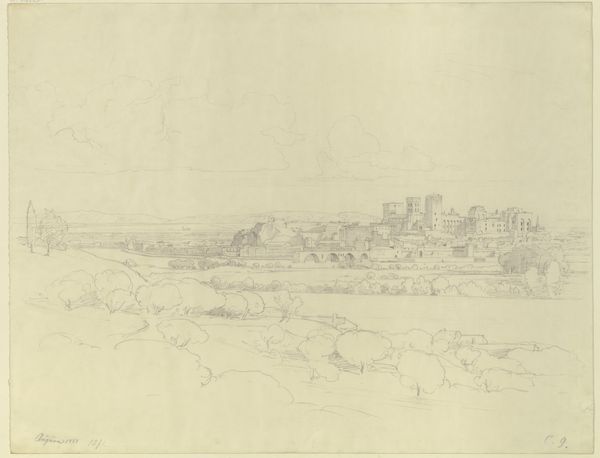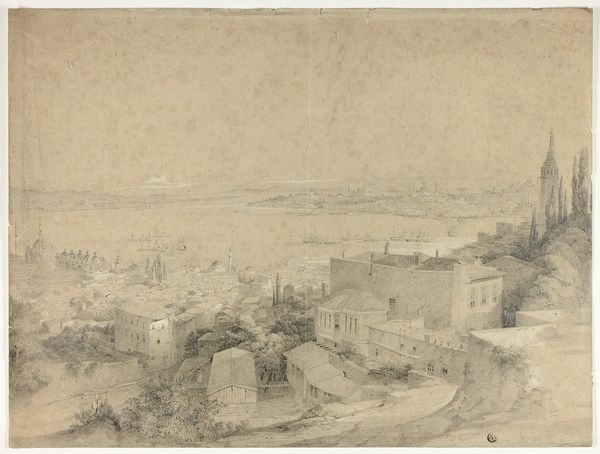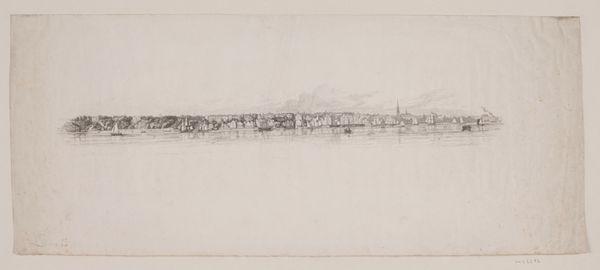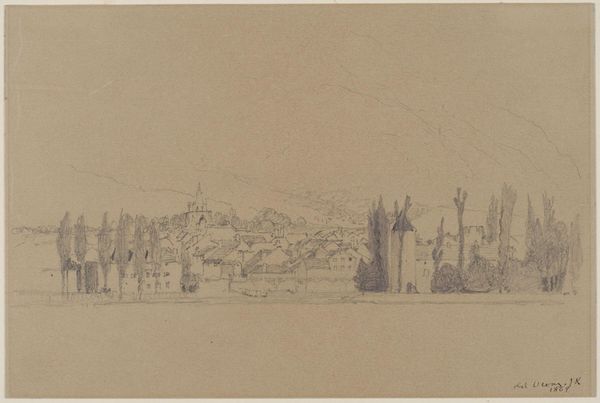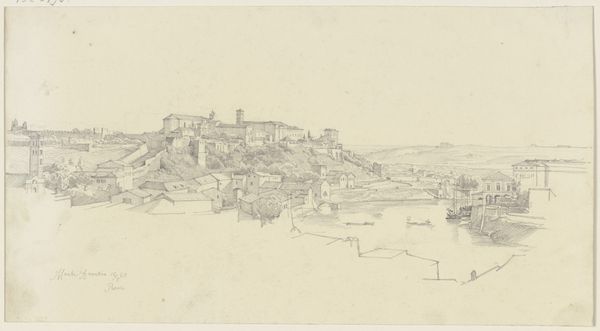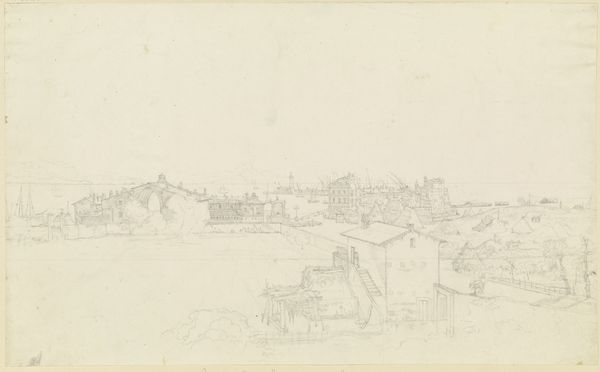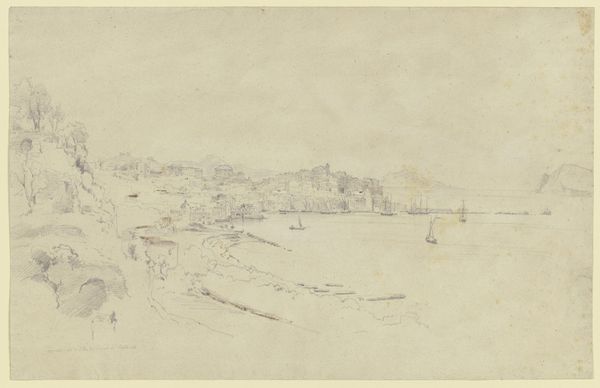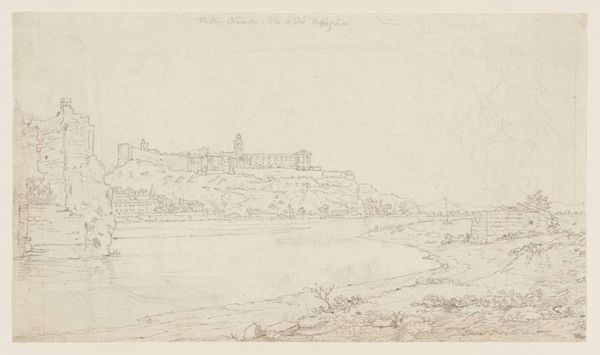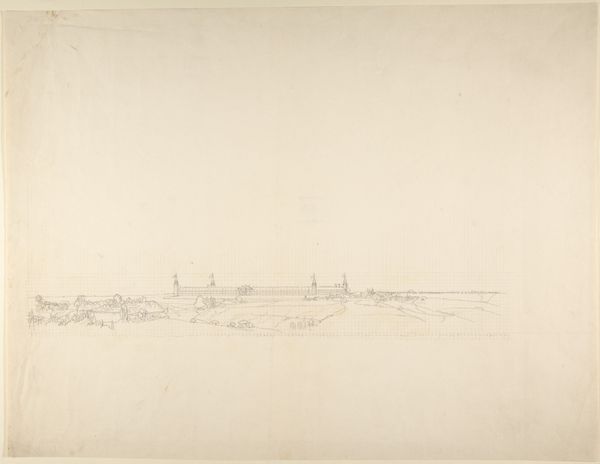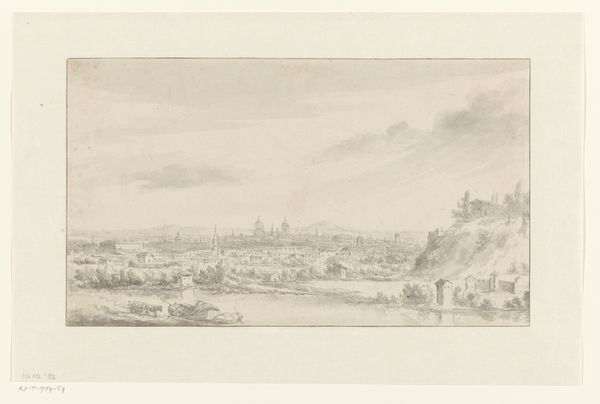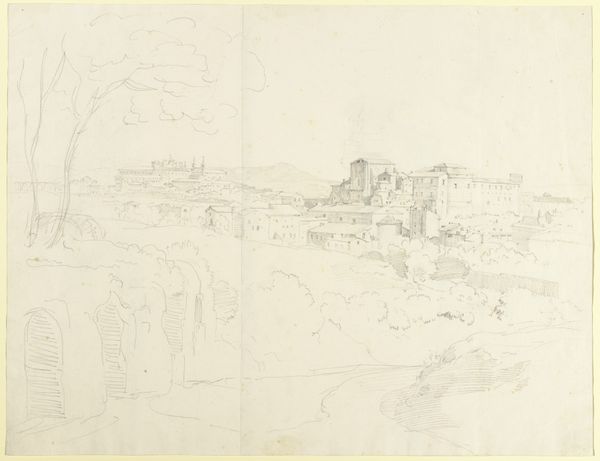
Design for a Stage Set at the Opéra, Paris (recto); Man with Cane (verso) 1840 - 1890
0:00
0:00
drawing, paper, pencil
#
drawing
#
landscape
#
paper
#
pencil
Dimensions: sheet: 9 11/16 x 12 13/16 in. (24.6 x 32.5 cm)
Copyright: Public Domain
Curator: It looks ephemeral, almost ghostly. A pencil sketch faded over time? Editor: Yes, this is Eugène Cicéri's "Design for a Stage Set at the Opéra, Paris (recto); Man with Cane (verso)", created sometime between 1840 and 1890. The medium is listed as pencil on paper, lending to that fragile, fleeting quality you noted. Curator: Setting the stage for narratives is fascinating. In what social framework would Cicéri be inspired? Were the productions reflecting current power dynamics and class structures, or subverting them? Who had access to these spectacles and how was that audience informed and impacted? Editor: It’s all interconnected, isn't it? Stage design of this era relied heavily on craft – the labor of draftsmen, carpenters, seamstresses – to create these illusory worlds for the wealthy elite. The production itself became a commodity. Curator: Exactly. And this pencil drawing is where it begins, not just as art, but a product shaped by the political atmosphere and designed to serve and/or challenge the established social order. Who held the pencil and who was excluded from it? The male gaze reflected here is telling too; how many female stage designers were given a platform at the time? Editor: Good question. This piece also shows the material restraints. We're looking at pencil, the cheapest, most portable form of planning in that period. Before digital design, these sketches would have guided artisans. Cicéri probably viewed his sketches as practical, a template to instruct and communicate, not necessarily art itself. The means of production were very hands-on. Curator: So, seeing it as a practical means connects directly with examining who did the ‘hands-on’ labor and in what working conditions. And these images – they dictated much about the visibility, the aesthetics, even the narratives circulating amongst a privileged public. The power held within a pencil stroke! Editor: That is true, from this sketch emerged sets to manufacture dreams for those in attendance and wages for those who made it real. Thinking about it this way emphasizes labor, the work—visible, invisible, exploited—required to create it all. Curator: Yes, making tangible the connections of those pencil lines, beyond aesthetic beauty, revealing stories of social production, identity, and power. Editor: The stage reveals truths hidden in plain sight. Thanks to you for the social layers informing the production, illuminating its historical moment.
Comments
No comments
Be the first to comment and join the conversation on the ultimate creative platform.
